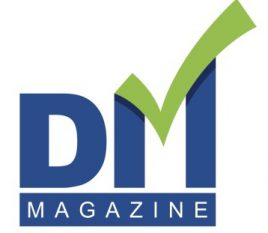 By Del Williams
By Del Williams
Nothing adds to a letter campaign more than a nice, personalized note, in the author’s actual handwriting. Now imagine adding the personalized note using high-speed, low-cost mailing equipment.
Direct mail professionals understand the power of pre-designed fonts that simulate handwriting and make it appear that letters have been personally addressed. Research shows mailers designed to appear handwritten are 300 percent more likely to be opened compared to standard printed envelopes. These are popular with companies eager to demonstrate a more personal and direct touch, such as financial, insurance, religious, political, and non-profit organizations.
Traditionally these fonts are selected from a handful of predesigned or custom cursive or hand printed options. While the fonts may be custom, each individual character used to remain unchanged from the last. Now, there is a new twist on this option: dynamic, customized and unique fonts created by the user combined with randomization that emulates natural variations in handwriting. This approach provides the extra level of personalization to catch the eye of mailing recipients.
For years, when campaigns used traditional handwritten-style fonts, recipients would tend to perceive the mail as more authentic and personal. Studies suggest that incorporating such elements can increase response rates by up to 50 percent, as people feel more valued and are more likely to act on personalized mail. Still, some companies employ pen-plotters and even actual hand writers with ballpoint pens to reach the next level of realism and attain the highest response rates.
The challenge is that traditional mass mailings essentially use static handwriting fonts that lack the authenticity of actual handwriting. The consistent uniformity of any pre-designed font indicates that it is computer-generated. Customized and more realistic-looking handwriting fonts for addressing can attract attention, increasing both open and response rates.
“There are reasons to generate your own dynamic font that stands out from every generic font,” says David Loos of MCS Inc, a company that designs, manufactures, sells, and supports industrial inkjet imaging, tracking, and inserting systems for the mail manufacturing industry. “These new dynamic fonts provide the authentic look of real handwriting but can be printed at full speed (and low cost) of high-speed production presses.”
MCS provides the software to process dynamic randomized handwriting and cursive fonts for addressing mailers with MyFont exclusively from Think Ink, an optional feature that works with MCS’ Raptor inkjet software. MCS offers the largest family of inkjet technology, including the Falcon Eagle, Osprey, and Condor, all driven with one platform, MCS’ Raptor software. All MCS products can drive multiple print heads, even if they use different technologies like piezo and thermal ink jets, that can deliver a variety of water-based dye pigment, polymer pigment, and UV inks.
The MyFont technology allows organizations to use the actual handwriting or cursive style of anyone, including the sender. After capturing a representative writing sample, a unique font is generated. During the print process, the technology goes a step further by making the font dynamic and randomizing the characters by slightly altering one of four to create a more “natural” look while printing at extremely high speeds.
According to Loos, printing addresses in ballpoint blue ink can further increase direct mail response rates. Alternatively, organizations can shorten the production run and save substantial postage costs by running MyFont in color ink simultaneously while printing an Intelligent Mail Barcode (IMB) in black ink.
In the high-stakes world of mass mail manufacturing, the inclusion of dynamic personalization of handwriting fonts, inks, and mail features is part of a broader trend to increase response rates. Now, with the industry increasingly adopting a hyper-personalized approach, matching the various component parts of a mail piece — addressing, envelope, messaging, attached cards, etc. — is even more critical.
Hyper-personalization in direct mail is a strategic approach where marketers leverage past purchase records, browsing habits, demographic details, and other available data to customize messages and offers for individual recipients. A hyper-personalized strategy that includes the fonts and addressing can significantly improve the efficacy of marketing endeavors by increasing open rates, click-through rates, and ultimately sales.
Organizations can acquire their own MyFont dynamic handwriting and cursive fonts by purchasing the MyFont Handwriting or MyFont Cursive license for MCS Raptor software. The MyFont option can be used with any MCS inkjet system. One license per machine is required. Organizations will need to purchase a font package with various options including custom fonts.
Del Williams is a technical writer based in Torrance, California.




